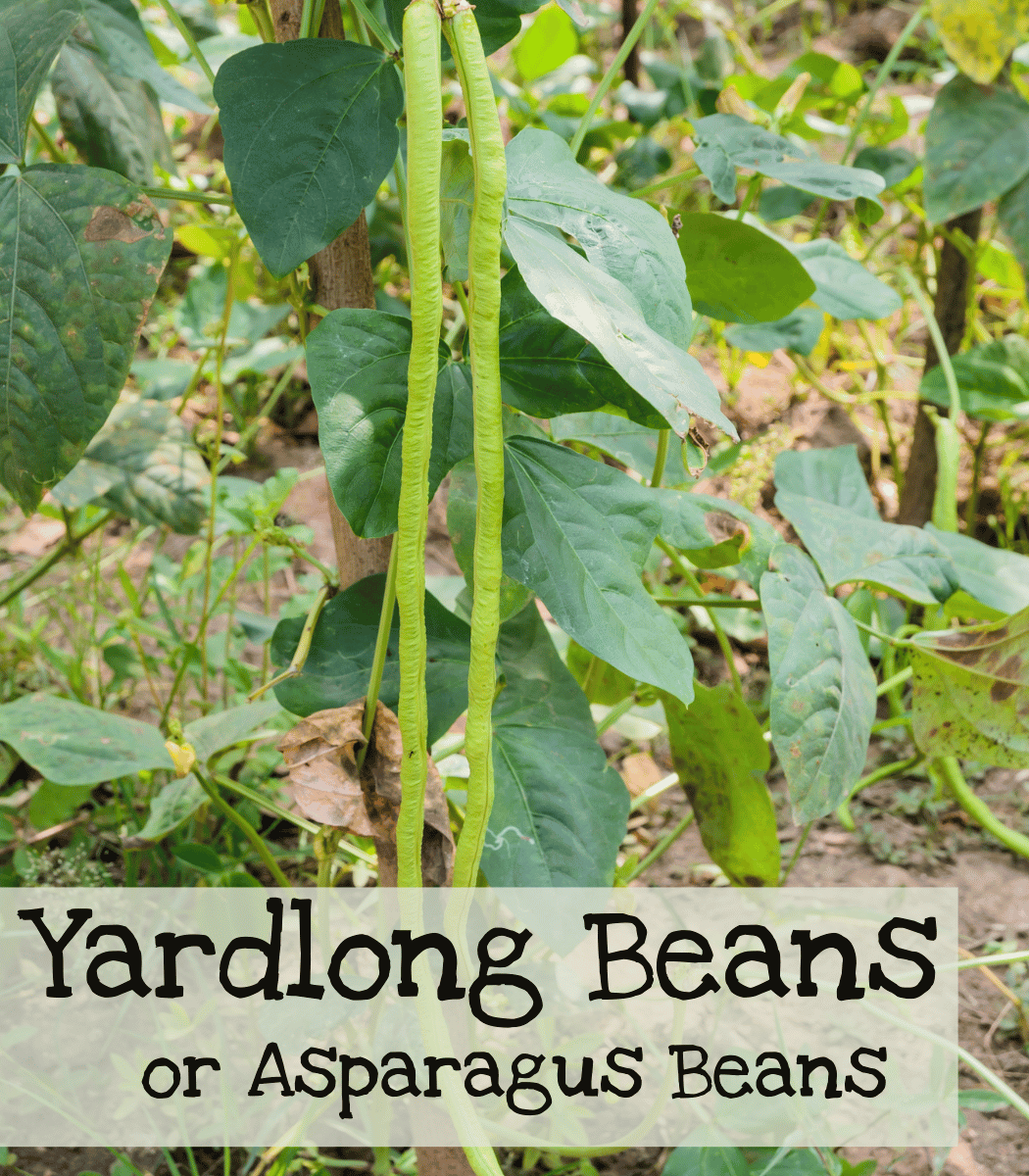
Asparagus Bean
Also known as the Yardlong Bean, the Asparagus bean is a pole bean that grows 3-foot long beans. They are heavy producers throughout the growing season and are good for small gardens. Grown on a trellis, they take up very little space. They can be used as a regular bean and are delicious in str-fries.
|
Unknown |
|
Vigna unguiculata |
|
Intermediate then easy |
|
Easy |
|
3 years if properly stored |
|
Annual |
|
7-14 days |
|
None Optional: can add a legume inoculant (follow the packaged instructions) |
|
1/2-3/4 inches |
|
Can grow more than 6′ |
|
Full sun |
|
58 days |
|
April, May |
|
Yes |

Table of Contents
Growing Tips


When to Start
Spring: After all danger of frost has passed.
Fall: Direct sow 10-12 weeks before the first frost. (July 1-Aug 1 for GA)
How to Start
Asparagus beans, or yardlong beans, are only intermediate because they require a tall trellis. The vines can grow 6-10 feet. Yardlong beans are easy to grow and are heavy producers.
Direct sow after all danger of frost has passed into full sun beds. Sow them at the base of a trellis and to a depth of 3/4 inches. Space them 4 inches apart. After they are several inches tall, thin to 8 inches.
Care
Yardlong beans require minimal care. They are slightly resistant to drought and will tolerate a wide range of soils (well-draining is still best.) Use mulch to keep weeds down and to help retain soil moisture.
Harvest
Harvest when pods reach 12-15 inches before the seed pods fill. They should be around the thickness of a pencil. Be careful not to damage the vines when harvesting. Scissors are best for cutting them off the vines as the vines will damage easily. Beans can be cooked like snap beans and are good in stir-fries. Young leaves and stems are also edible. They should continue to produce until frost.
Pest Management
Ants are attracted to the blooms of the beans. With ants usually come aphids as the ants will farm the honeydew the aphids produce. Blasting them off with a jet of water is helpful. What may be more effective to keep the pests under control is using companion plants and some trap crops. Try planting flowers that attract beneficial predators that will eat the aphids. Doing this in conjunction with a trap crop that aphids enjoy will also help keep them out of the beans.
How to use
Asparagus beans are often used in stir-fries. They can be cut into bite-sized pieces and tossed into a wok. These beans can also be treated just like green beans. They can be roasted, sautéed, pan-fried, and steamed.
My personal experience
I tried growing these one year. They are the reason I had to build my own trellis as I couldn’t find one tall enough that would work in my raised beds. I now have 3 of these trellises for other climbing plants like cowpeas and jelly melon.
Asparagus beans were fun to grow. It was very satisfying seeing these very long beans hanging down off the vine. I wasn’t impressed with the flavor of the variety I got. They were no contender bush bean. (Those are my favorite beans that I’ve tried.) I don’t know if I will ever grow these again, but they were easy and prolific.
Seed Saving

Isolation Distance
Asparagus beans will cross with other asparagus beans and cowpeas (black-eyed peas). Separate varieties by 50 feet.
Instructions
Pick beans for seed after the pods are ripe and have dried on the plants. Don’t allow dried pods to get rained on as the beans may quickly mildew or sprout in their pods.
When very dry, most pods will split on their own to drop their seeds. The rest can be easily crumbled in the hands and the finer chaff blown away after removing the big pieces. Finish drying the beans in a dry spot indoors or undercover.
Features
- Long, slender pods are best when picked when they are the size of a pencil and no more than 18” long. They have a nutty flavor and are good stir-fried, seemed, or sautéed.

- Need a taller trellis? Learn how to make a trellis.
- If you’re eating your beans green, allow just a few pods per plant to remain and mature for seed. Too many pods maturing on an individual plant will cause it to stop setting more beans in order to concentrate on maturing the ones it has.
- A DANGER is the late summer rains, which can moisten seeds drying in their pods while still on the vine. Too much moisture during seed maturation lowers the viability and storage life of the finished seeds, and can even cause them to sprout or mildew while still on the vine.
You May Also Like:
Alyssum: Companion Plant
Nasturtium: Can be used as a trap crop
Wax Melon (Winter Melon)
Companion Planting: How to use flowers to help control pests.
Trap cropping: How to keep pests out of your main crop.
